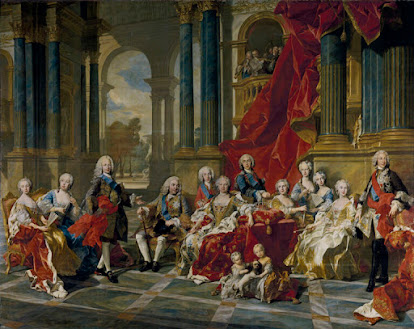Modern Japan and Their Art
MODERN JAPANESE ART
Nihonga, what is that? It is modern and contemporary Japanese Painting. It may sound broad, but it has some specific characteristics to it. It "incorporates ink, and/or pigment, gold and silver leaf on washi (Japanese paper) or eginu (silk)." (Bruval) This style of art within the Chinese culture has persisted since the 8th century. Starting out as a Chinese style, it then Japan endorsed it as it defined Japanese paintings and art for a long time.
Similarly, Nihonga was a response to the change of Japanese society during the Meiji Period. This allowed a push towards modernity throughout society. The artists continued to keep the heritage of classical Japanese painting but wanted to create momentum for "global exposure and artistic influence." (Art Story) This style remains to be a supreme and dignified art movement.
THE ART
Takeuchi Seihō created Calm Spring in Jiangnan in 1921 in Japan. It is a color on silk/hanging roll with the dimensions of 86.4 x 72.8cm. This is an "emotional serene Japanese painting" (Huynh) It is set within the Jiangnan region during the spring season and embraces its peace. Takeuchi was great at creating pieces that connect with nature and the sense of peacefulness. As his possible intent was to "invite viewers to immerse themselves in the gentle ambiance of the scene." (Huynh)
IMPRESSIONS
I feel just as the artist was trying to evoke within his viewers. You can just feel the serenity from this masterpiece just from the pastel colors, light and softness of the use of his brush, and the scene itself. He depicts a blooming cherry blossom overlooking two figures that seem to be admired. I also really enjoyed his use of color and value as everything seems to be in harmony and continuous without breakage of the theme. Lastly, although the texture doesn't seem to be organic, the texture he incorporated of softness also enhances those feelings.
THE ART
This piece; Dragon Against Tiger by Hashimoto Gahō was created in Japan in 1899. This painting was created on silk with unknown dimensions. This piece focuses on the contact between a tiger and a dragon. The dominant dragon stands on the edge of a rocky cliff as he roars against a dragon the is made of clouds. Both created a contrast of elements of earth and air. Both the dragon and tiger were Japanese mythical symbols. The tiger was connected with "earthly kings and the dragon with the Emperer of Heaven." (Art Story) It was found by some that the message of this piece was the equality between the two realms, with the precedence of Heaven. It was also known that Hashimoto's style frequently used Western elements as shown through the naturalistic style of the tiger.
IMPRESSIONS
I did not know what to think of this piece when I first found it. I was confused on the meaning and backstory of the relationship of a "cloud" figure of a dragon and a tiger. But once I read the backstory, it sparked even more of an interest. I like that this artist took two mythological symbols and created a beautiful masterpiece. You can see the sense of tranquility within the dragon as its figure was made of cloud. While the tiger stood its dominance and correlates with the association with earthly kings. The use of pastel colors but then contract from the rock and tiger creates the sense of being in "two realms." I can sense the tension as both serve a different purpose spiritually, which touches on emotion as well.
MY OPINION
My reasoning of choosing these pieces all lie upon the beauty and tranquility all of them give in their own way. I am a sucker for vibrant colors and both pastel. As the vibrancy of the Autumn Leaves drew me in, it is the composition of the piece that kept me interested. The peacefulness and simplicity of Calm Spring and use of pastel colors along with consistency of looking smooth is what made that piece so interesting. While lastly, Dragon Against Tiger definitely drew me in as I was confused and intrigued on the backstory of this painting. I loved the colors and idea of it and upon reading the backstory is what made an 'awe' for me. In whole, I always found Japanese art so unique in its own ways through visual arts, music, theatrics and more.
References:
Singulart. “10 Most Famous Japanese Painting Masterpieces.” Singulart Magazine, 24 Oct. 2023, www.singulart.com/en/blog/2023/10/24/famous-japanese-paintings/.
Okamoto, Lily. “Introduction: Japanese Art from Modern to Contemporary.” Lily Okamoto, Lily Okamoto, 2024, www.lilyokamoto.com/blog/exploring-japanese-modern-and-contemporary-art#:~:text=Modern%20Art%20Styles%20in%20Japan&text=Nihonga%3A%20This%20style%20focuses%20on,and%20subjects%20to%20Japanese%20artists.
Bruvel, Marianne. "What is Nihonga and Its History?" Bruvel Fine Arts, Bruvel Fine Arts, 2024, https://www.bruvelfinearts.com/pages/what-is-nihonga-art-and-its-history#:~:text=NIHONGA%20literally%20translates%20to%20%E2%80%9CJapanese,)%20or%20eginu%20(silk).
The Art Story. "Nihonga." The Art Story, 2024, https://www.theartstory.org/movement/nihonga/.
Arte in Giappone. "Yokoyama Taikan." Arte in Giappone, Altervista, 01 Sept. 2016, https://arteingiappone.altervista.org/en/yokoyama-taikan/.
Google Arts & Culture. "Autumn Leaves." Google Arts & Culture, Google, 2024, https://artsandculture.google.com/asset/autumn-leaves/7wGv2-aJaMR26g?hl=en.
Google Arts & Culture. “Calm Spring in Jiangnan.” Google Arts & Culture, Google, 2024, artsandculture.google.com/asset/calm-spring-in-jiangnan/IAEEaybkRmH5Og?hl=en.
“Tsukimi: Japan’s Autumn Moon Festival.” JRPass, JRPass, 2024, www.jrpass.com/blog/tsukimi-japan-s-autumn-moon-festival#:~:text=Japan’s%20Harvest%20Moon%20Festival%2C%20Tsukimi,to%20experience%20this%20beautiful%20country.
Huynh, Samuel. "Calm Spring in Jiangnan - Takeuchi Seiho." Samkev.Art, 12 Oct. 2023, https://samkev.art/featured/calm-spring-in-jiangnan-takeuchi-seiho-samuel-huynh.html.





Comments
Post a Comment